You’ll discover that transforming your indoor spaces with strategically placed plants doesn’t require a master gardener’s touch. Whether you’re working with a compact apartment or a spacious home, these nine decoration techniques can help you create stunning botanical displays that maximize both beauty and function. From dramatic living walls to intimate corner arrangements, each method offers a unique way to bring the outdoors in; let’s explore how to elevate your interior design with nature’s finest elements.
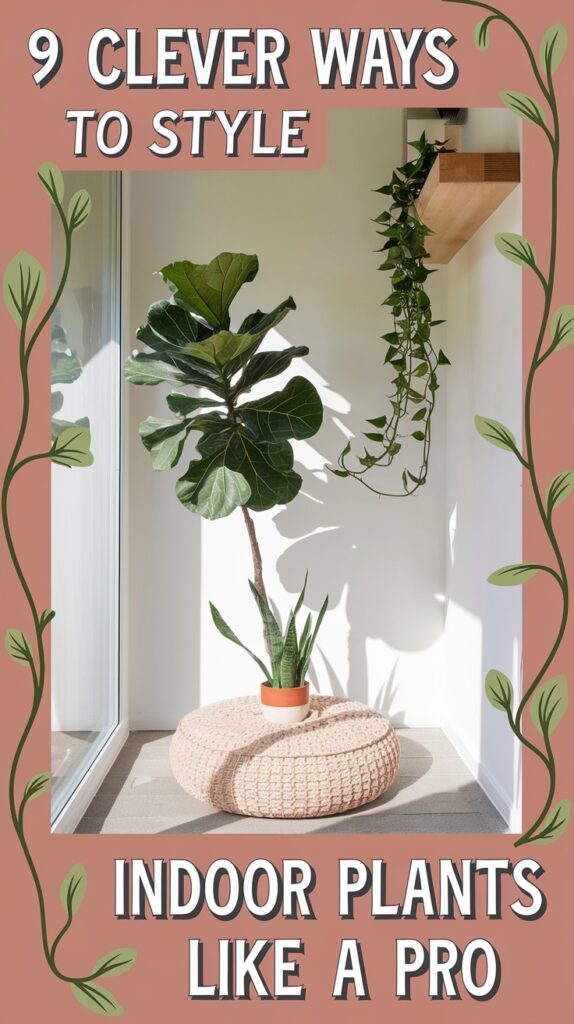
Contents
- 1 Create a Living Wall With Vertical Planters
- 2 Layer Plants at Different Heights for Visual Impact
- 3 Design a Statement Corner With Grouped Plants
- 4 Use Hanging Plants to Maximize Space
- 5 Style Window Sills With Sun-Loving Varieties
- 6 Incorporate Plants Into Shelving Arrangements
- 7 Transform Tables With Miniature Plant Displays
- 8 Add Green Accents to Bathroom Spaces
- 9 Mix Plant Textures and Leaf Patterns
Create a Living Wall With Vertical Planters
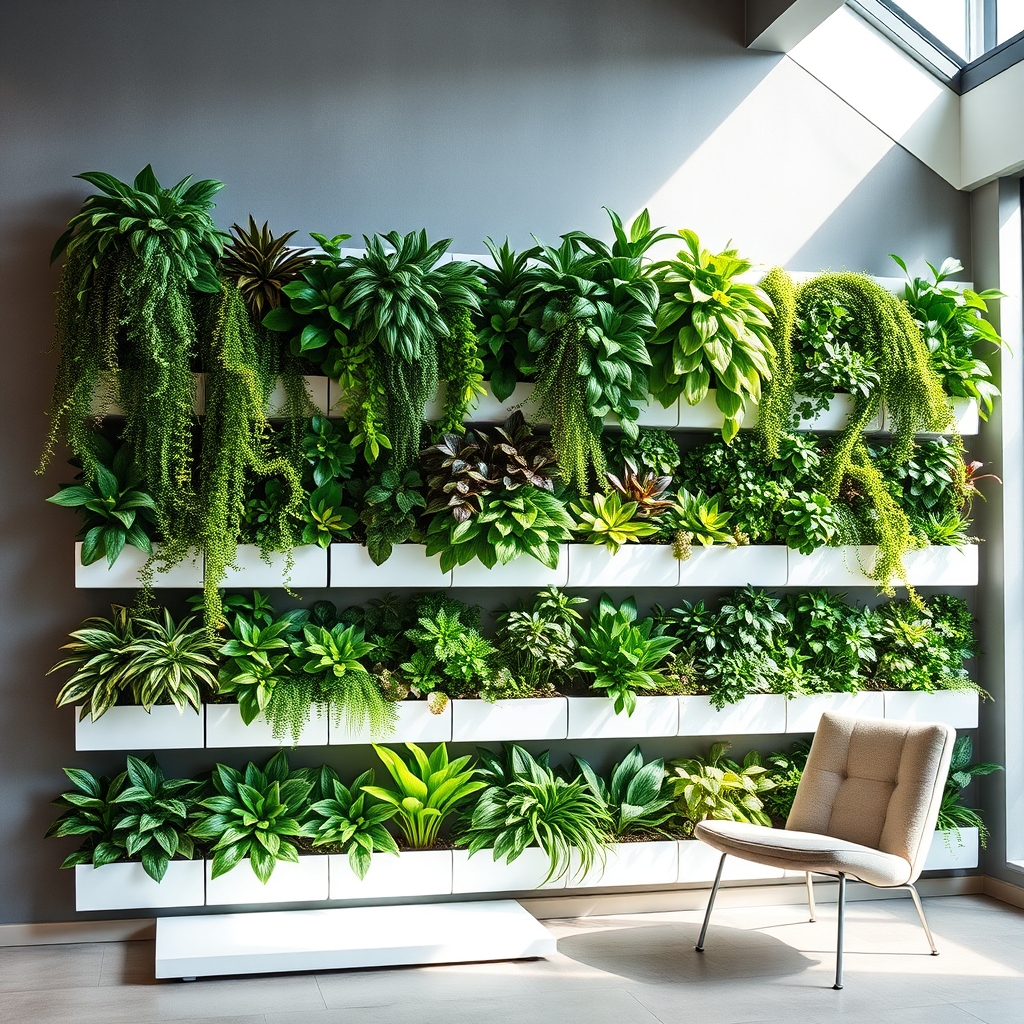
A living wall with vertical planters transforms indoor spaces by creating a lush, green tapestry of plants mounted directly on walls.
The system typically consists of modular panels or pocket planters arranged in a grid pattern, allowing multiple plants to grow vertically rather than horizontally.
These installations can span from floor to ceiling, featuring a mix of trailing vines, ferns, succulents, and tropical foliage plants arranged in varying textures and colors.
The unique feature of vertical planters is their space-saving design, which maximizes plant display in minimal square footage while doubling as living artwork.
Most systems incorporate built-in irrigation and drainage to maintain plant health without creating mess.
Layer Plants at Different Heights for Visual Impact

Layering plants at different heights creates a dynamic visual display that adds depth and dimension to indoor spaces. This arrangement technique involves positioning plants on various levels – floor plants, tabletop specimens, hanging baskets, and elevated stands – to form a cascading effect.
Tall plants like fiddle leaf figs or palm trees serve as backdrop anchors, while medium-height plants fill the middle ground, and smaller specimens occupy lower positions. The varied heights draw the eye upward and downward, establishing natural movement throughout the room.
This approach maximizes vertical space while preventing a flat, monotonous appearance. Strategic placement of plant stands, shelves, or pedestals helps achieve the desired elevation differences, allowing each plant to receive proper light exposure while contributing to the overall layered composition.
Design a Statement Corner With Grouped Plants

Creating a statement corner with grouped plants transforms an ordinary room angle into a striking focal point.
Multiple plants of varying heights, textures, and leaf shapes are arranged in clusters, typically using 3-5 specimens. Taller plants like fiddle leaf figs or palm varieties anchor the back, while medium-height plants occupy the middle ground, and trailing plants cascade from the front.
The plants can be elevated using stands, pedestals, or shelves at different levels to create visual interest and depth. This arrangement works particularly well in corners near windows or in areas that need visual weight.
The grouping appears more intentional and designed when plants are housed in coordinating pots that share a common color scheme or material.
Use Hanging Plants to Maximize Space
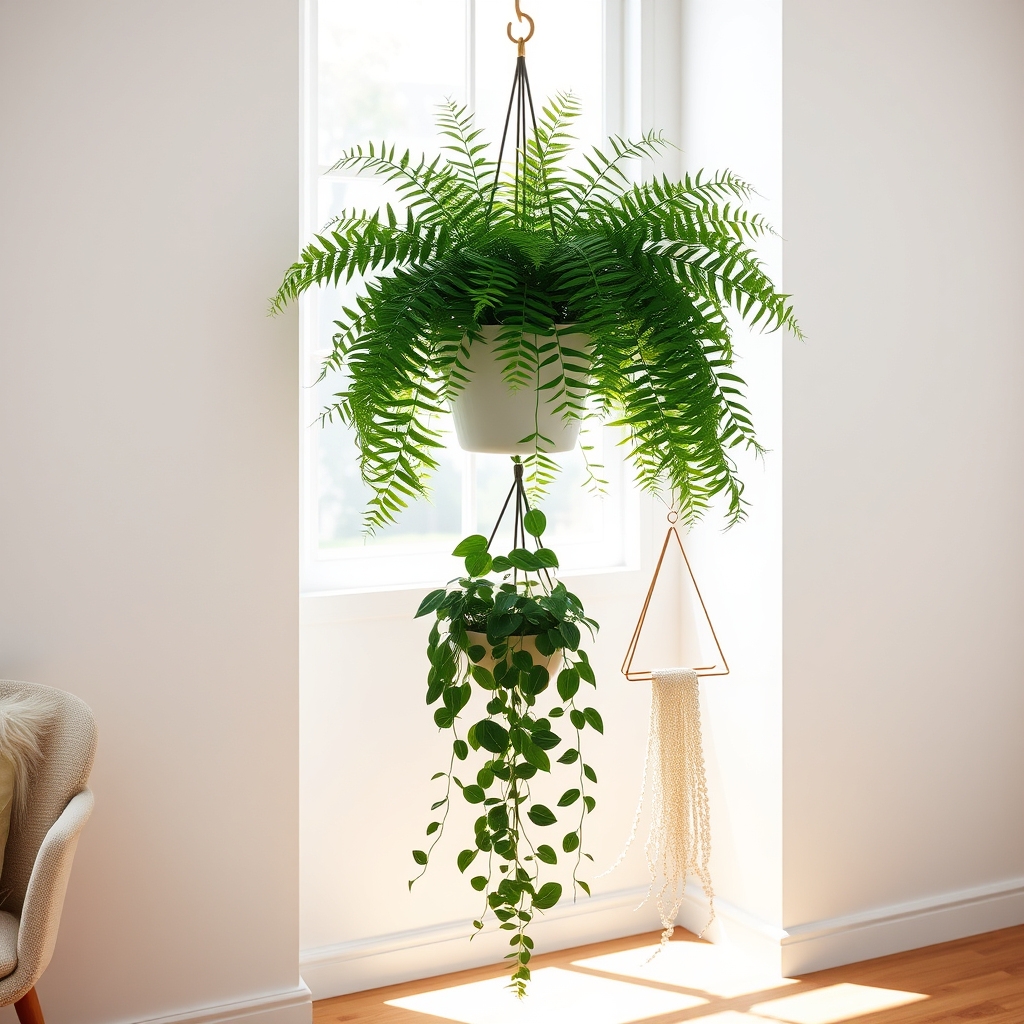
Hanging plants create vertical interest while efficiently utilizing unused overhead space in rooms.
Plants suspended from ceiling hooks, wall brackets, or mounted planters cascade downward, adding layers of greenery without occupying valuable floor or surface area. Common choices include spider plants, pothos, string of pearls, and Boston ferns, which naturally form trailing vines or foliage.
The hanging method can vary from macramé plant holders to sleek modern containers, allowing the style to match any décor. This arrangement is particularly effective in corners, near windows, or above furniture, where the trailing greenery creates natural curtains of living material and draws the eye upward, making rooms appear larger.
Style Window Sills With Sun-Loving Varieties
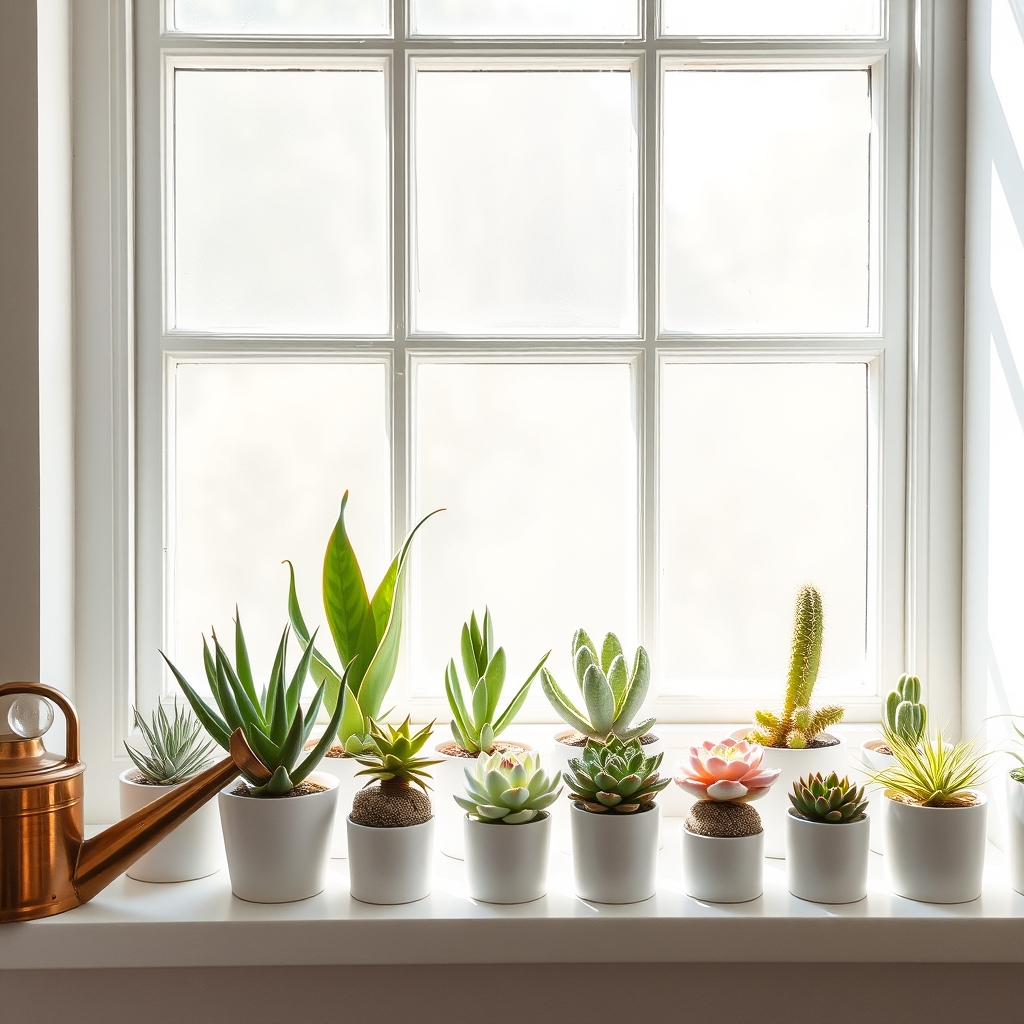
Sun-loving plants arranged along window sills create vibrant, living displays that maximize natural light exposure while beautifying interior spaces.
Small succulents, cacti, and compact herbs positioned on sills form eye-catching layers of greenery that thrive in direct sunlight. These window-friendly varieties typically feature upright growth patterns or trailing habits that complement the linear nature of sills without blocking too much light.
Strategic placement allows plants to photosynthesize efficiently while serving as natural curtain alternatives or accent pieces. The arrangement works especially well with south and west-facing windows, where sun-loving specimens can receive 6+ hours of direct light daily.
Incorporate Plants Into Shelving Arrangements
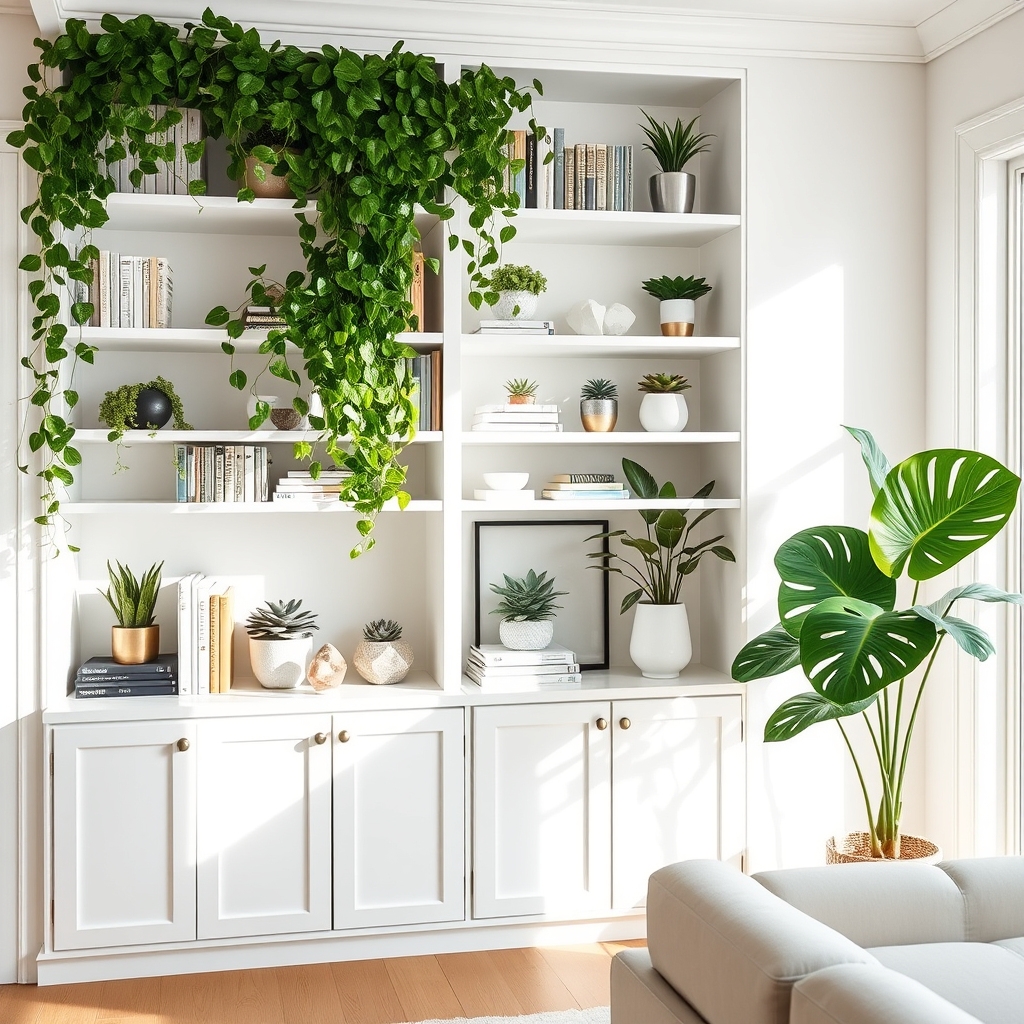
Incorporating plants into shelving arrangements creates dynamic, layered displays by strategically placing greenery among books, artwork, and decorative objects.
Plants can be positioned at varying heights and depths, with trailing varieties cascading down shelf edges and upright specimens adding vertical interest. Small succulents fit neatly between books, while larger potted plants anchor corner spaces or serve as shelf centerpieces.
The arrangement combines form and function, using empty shelf space to house plants while ensuring they receive adequate light. Mixed pot sizes, plant types, and textures create visual rhythm across the shelving unit, transforming ordinary storage into a living display that adds natural beauty to interior spaces.
Transform Tables With Miniature Plant Displays

Miniature plant displays on tables create eye-catching focal points while maximizing limited space. Small succulents, air plants, or tiny herb gardens arranged in decorative containers, terrariums, or shallow dishes transform ordinary tables into living artwork.
These compact arrangements can feature multiple plants at varying heights, complementary pots, and natural elements like pebbles or moss. Perfect for coffee tables, side tables, or dining areas, these displays add life and texture without overwhelming the surface or blocking conversation.
The versatility of miniature displays allows for seasonal updates and easy maintenance while bringing nature’s aesthetic appeal to indoor spaces.
Add Green Accents to Bathroom Spaces
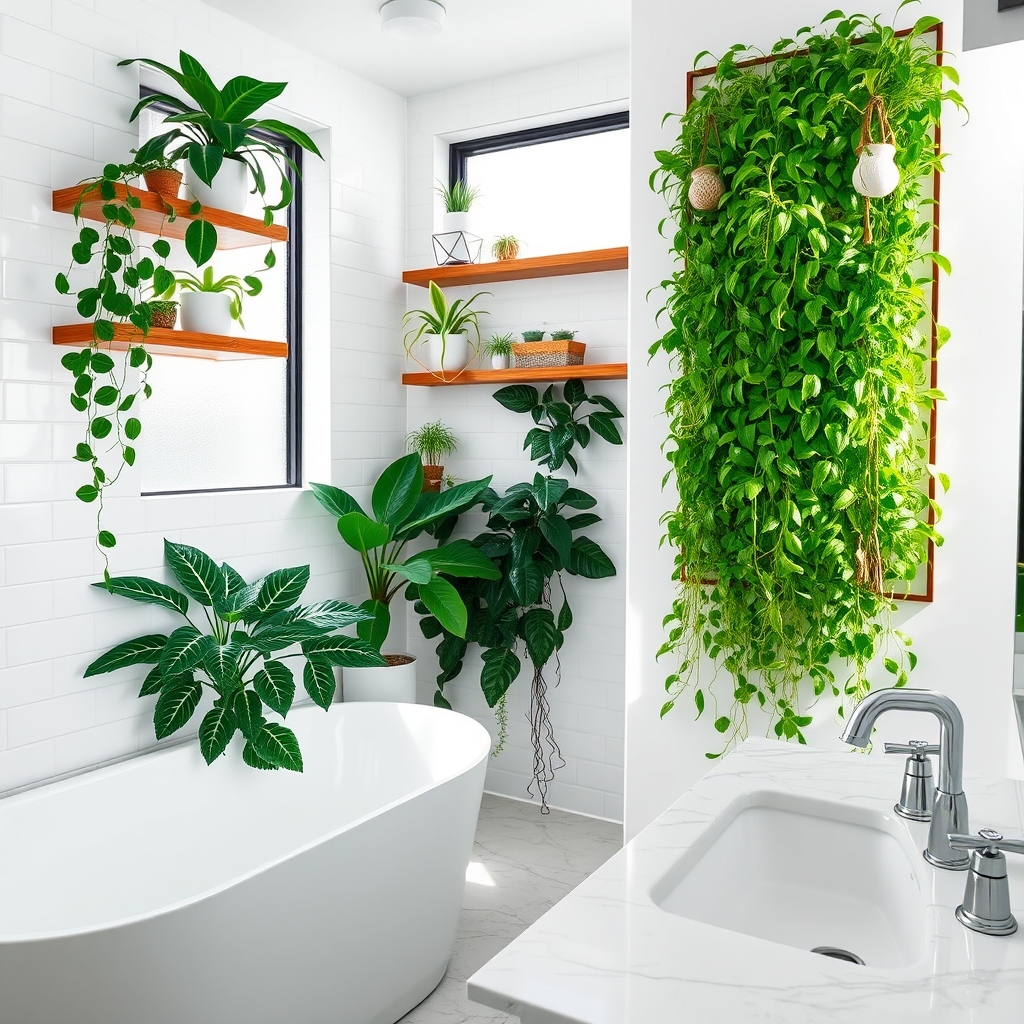
Adding green accents to bathroom spaces transforms sterile environments into spa-like retreats through strategic plant placement.
Small trailing plants on shelves or windowsills cascade gracefully, while compact humidity-loving varieties like ferns and peace lilies thrive on countertops and toilet tanks.
Shower-friendly plants mounted in waterproof containers bring life to unused corners, and vertical wall planters maximize limited floor space.
The plants’ natural ability to absorb moisture makes them particularly well-suited for bathrooms, while their vibrant foliage softens harsh bathroom surfaces and creates a calming, organic atmosphere.
Essential considerations include selecting moisture-tolerant species and ensuring adequate lighting, whether natural or artificial.
Mix Plant Textures and Leaf Patterns
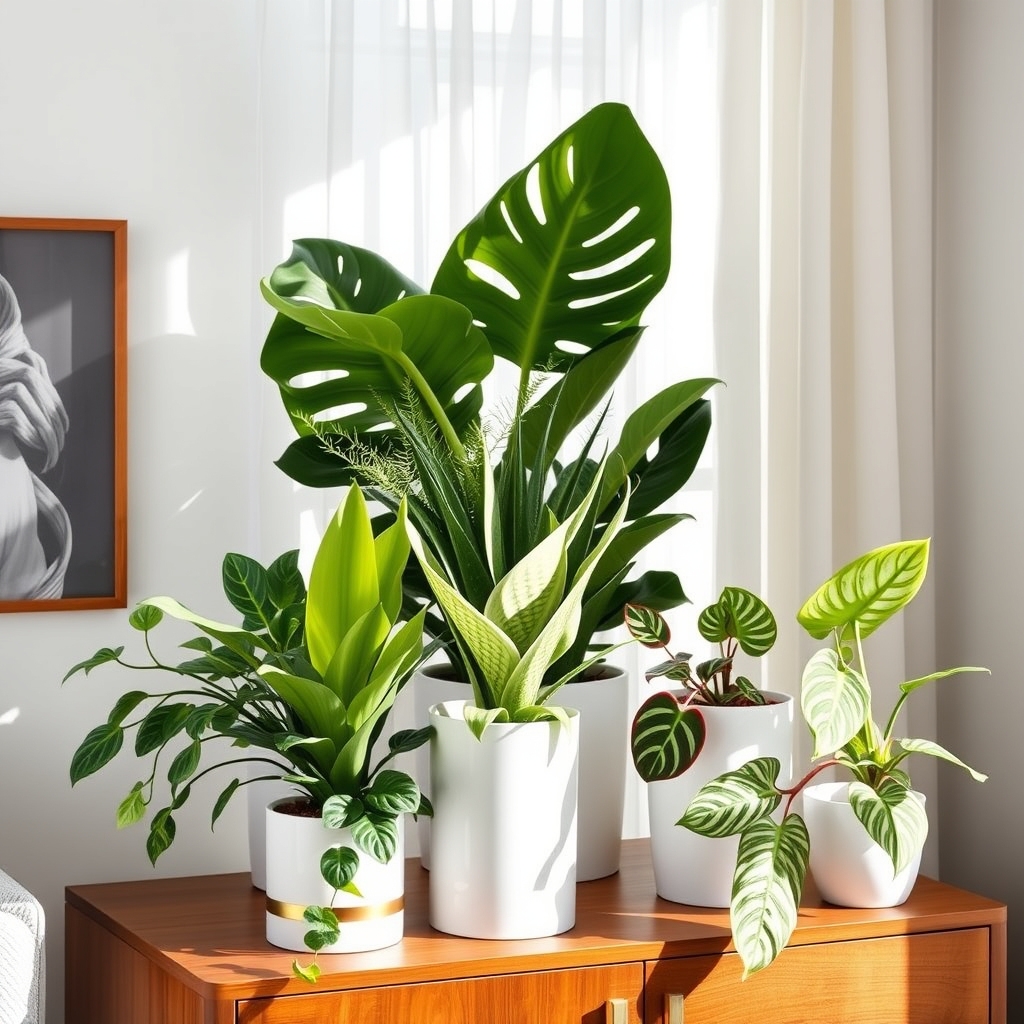
Mixing plant textures and leaf patterns creates visual interest and depth in indoor spaces through deliberate combinations of different foliage types.
Large, smooth leaves like those of peace lilies can be paired with feathery ferns, while spiky snake plants complement the round leaves of Chinese money plants.
The contrast between glossy and matte leaves, variegated and solid patterns, and different leaf sizes adds dimension to plant groupings.
Strategic texture mixing prevents monotony and draws the eye through the space, making even small plant collections appear more dynamic and professionally curated.
